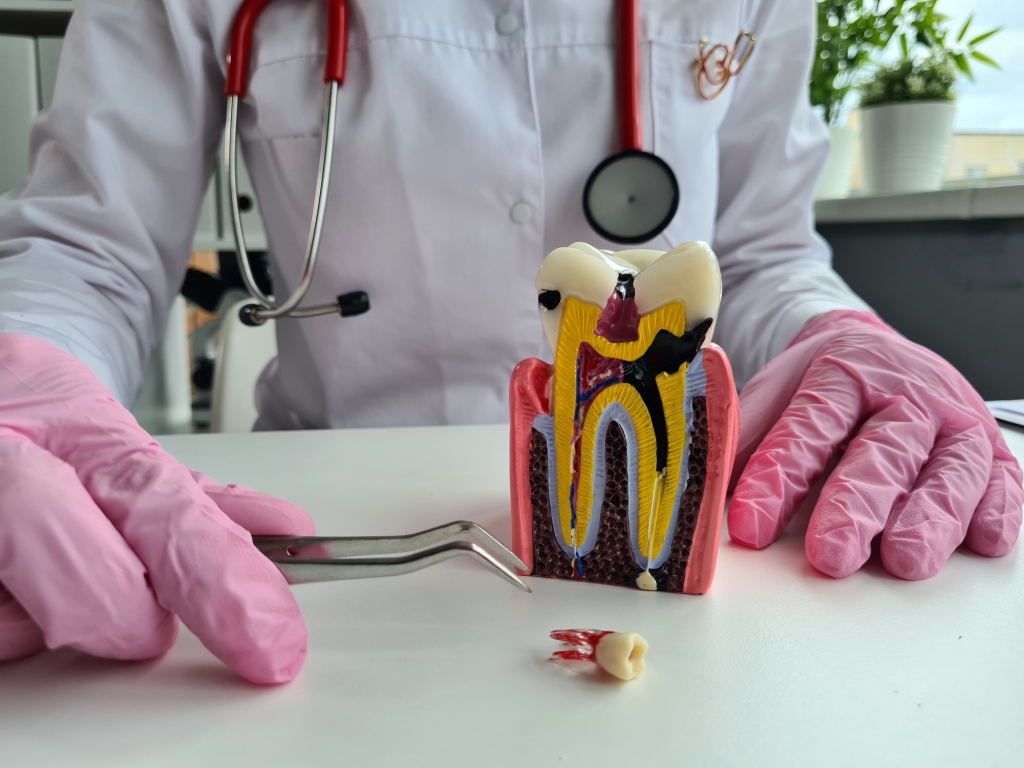Nerve Extraction From Tooth

The process of nerve extraction from a tooth, also known as endodontic therapy or root canal treatment, is a complex procedure that requires precision, expertise, and a thorough understanding of dental anatomy. This treatment is performed to alleviate pain, remove infected tissue, and prevent further complications. The goal of nerve extraction is to eliminate the infected pulp, clean and shape the root canal, and fill it with a material that will prevent future infections.
To understand the necessity of nerve extraction, it’s essential to delve into the structure of a tooth. A tooth is composed of several layers: the enamel, the dentin, and the pulp. The pulp, located in the center of the tooth, contains nerves, blood vessels, and connective tissue. When the pulp becomes infected or damaged due to decay, trauma, or deep fillings, it can cause severe pain, swelling, and potentially lead to an abscess.
The symptoms that may indicate the need for nerve extraction include persistent toothache, sensitivity to hot or cold temperatures, swelling and tenderness in the surrounding gums, and in some cases, a visible swelling or boil on the gum. If left untreated, an infected tooth can lead to more severe health issues, such as the spread of infection to other parts of the face, skull, or even the bloodstream.
Step-by-Step Nerve Extraction Procedure
The nerve extraction process typically involves several steps: 1. Preparation: The dentist or endodontist will start by administering local anesthesia to numb the area around the tooth. This ensures that the patient remains comfortable throughout the procedure. 2. Access Opening: A small access hole is drilled into the tooth to access the pulp chamber and root canal. 3. Pulp Removal: The infected pulp is carefully removed from the chamber and canal using specialized instruments. This is the nerve extraction part of the procedure. 4. Canal Cleaning and Shaping: The canal is cleaned with antibacterial solutions and shaped to prepare it for filling. This step is crucial for removing all infected tissue and preventing reinfection. 5. Filling the Canal: The cleaned and shaped canal is filled with a biocompatible material, usually gutta-percha, and sealed to prevent bacteria from entering the canal. 6. Restoration: After the nerve extraction and filling, the tooth is restored with a filling or crown to protect it from further damage and restore its function.
Types of Nerve Extraction
There are primarily two types of nerve extraction procedures: - Simple Extraction: This is performed when the infection is limited to the pulp chamber and has not significantly affected the root canal. - Surgical Extraction: In cases where the infection is severe or the tooth is not accessible through conventional methods, surgical extraction might be necessary. This involves making an incision in the gum to access the infected area.
Advances in Nerve Extraction Technology
Recent advancements in dental technology have significantly improved the nerve extraction process, making it more efficient, less painful, and with higher success rates. Some of these advancements include: - Digital Radiography: Allows for more accurate diagnosis and treatment planning. - Operating Microscopes: Enhance visibility, enabling more precise removal of infected tissue. - Nickel-Titanium Files: Improve the cleaning and shaping of the root canal. - Minimally Invasive Techniques: Reduce the need for extensive access openings, preserving more of the tooth structure.
Recovery and Aftercare
After the nerve extraction procedure, patients may experience some sensitivity or discomfort, which can be managed with over-the-counter pain relievers. It’s essential to follow the dentist’s instructions for aftercare, which typically include: - Avoiding chewing on the treated tooth until it is fully restored. - Practicing good oral hygiene to prevent further complications. - Returning for follow-up appointments to ensure the tooth is healing as expected.
Conclusion
Nerve extraction from a tooth is a critical procedure for relieving pain and preventing the spread of infection. With advancements in dental technology and the expertise of dental professionals, this treatment has become more effective and less invasive. Understanding the process, from the initial symptoms to the recovery phase, can help individuals make informed decisions about their dental health and seek timely intervention when needed.
FAQ Section
What are the common symptoms that indicate the need for nerve extraction?
+Common symptoms include persistent toothache, sensitivity to hot or cold temperatures, swelling, and tenderness in the surrounding gums. In some cases, a visible swelling or boil on the gum may also be present.
Is nerve extraction a painful procedure?
+Thanks to local anesthesia, patients typically do not feel pain during the procedure. However, some sensitivity or discomfort may be experienced afterwards, which can be managed with pain relievers.
How long does it take to recover from nerve extraction?
+Recovery times can vary, but most patients can return to their normal activities shortly after the procedure. The tooth may be sensitive for a few days, and it’s crucial to follow the dentist’s aftercare instructions to ensure proper healing.
Can nerve extraction prevent future infections?
+Yes, when performed correctly, nerve extraction can prevent future infections by removing the infected pulp and sealing the canal to prevent bacteria from entering. However, good oral hygiene practices are still essential to maintain overall dental health.
Are there any alternatives to nerve extraction?
+In some cases, alternatives like direct pulp capping may be considered for minor infections. However, for severe infections, nerve extraction is often the most effective treatment. The decision should be made in consultation with a dental professional based on the individual’s condition.
